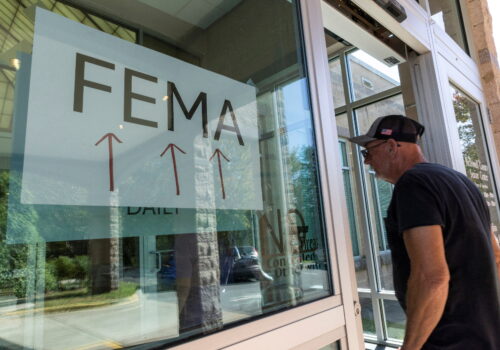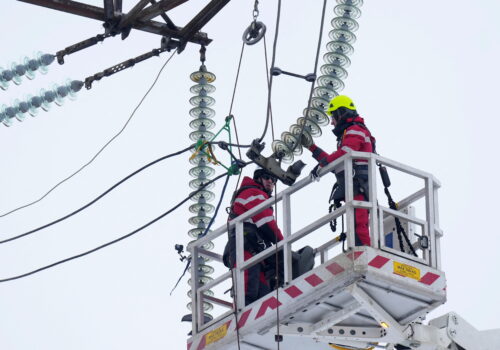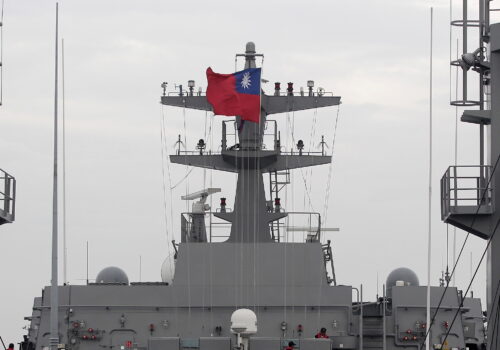It’s not just hard power and soft power that matter. ‘Resilience power’ is every bit as essential.
Imagine a moment—years from now, or perhaps only weeks—when tensions between the United States and China escalate rapidly. US forces are deployed to deter aggression and reassure allies in the Indo-Pacific. But at home, the pressure mounts. Cyberattacks shut down airports. Water systems fail. Fuel and food distribution grind to a halt. Disinformation floods social media, spreading panic and mistrust. Protests erupt as confidence in federal leadership falters. Markets wobble. Emergency services are overwhelmed.
In that moment, how easy would it be to project military force abroad while the domestic environment crumbles? How long would public opinion support overseas deployment if people couldn’t live their daily lives safely and securely? And how credible would deterrence be if adversaries believed the United States could be destabilized faster than it could respond?
This is not science fiction. It is a plausible test of national resilience in the 2020s.
For decades, national security strategies have focused on projecting strength outward through military deterrence and diplomatic influence. But today’s threats are no longer distant or episodic. They are persistent, interconnected, and increasingly domestic. Great-power competition, cyber sabotage, economic coercion, disinformation, and natural hazards are no longer confined to distant battlefields. They manifest at home, and often without warning.
Without the ability to function under pressure, even the most sophisticated military and diplomatic strategies will falter.
Russia’s full-scale invasion of Ukraine in 2022 made this clear. Ukraine’s defense did not rest on firepower alone. It was held together by resilient institutions, digital agility, civic unity, and leadership under pressure. Civil society improvised, government systems adapted, and citizens endured. This was resilience in action; a demonstration that true power includes the ability to sustain national functions while under siege.
In this context, it’s time to rethink and expand policymakers’ conception of national power. Hard power and soft power remain critical, but they are no longer sufficient. A third pillar, resilience power, must be treated as equally foundational. Resilience power is the ability of individuals, societies, and systems to anticipate, withstand, recover from, adapt to, and bounce forward from shocks and disruptions. In an era of systemic risk, resilience is a form of power.
Resilience power matters for all nations, but especially those without great-power status. They may not control the intentions of adversaries, but they do have agency over their own exposure and preparedness. In a world of systemic risk, this internal strength becomes a form of deterrence.
And yet, in many national security strategies, resilience is still treated as a support function—worthy, but technical and unglamorous. Too often, it is confined to contingency planning or relegated to the margins of homeland security policy. There remains a tendency to cast resilience as a defensive posture or something to fall back on when more assertive tools fail. This framing misses the strategic potential of resilience power. In reality, such resilience actively enables offensive capability. It allows governments to focus externally by ensuring domestic continuity. It deters adversaries by reducing the disruption they can cause. It is not a retreat from strength, but the very heart of national security. And in a world where shocks are inevitable, it may be the most decisive form of power a democracy can possess.
Resilience power is not only the preserve of emergency responders or civil crisis planners. It requires experts in both threat and hazard to step out of their silos and see the connections. And it is a whole-of-nation, multidimensional societal task. In March, the Atlantic Council launched the Adrienne Arsht National Security Resilience Initiative, which is focused on advancing resilience as a core tenet of US and allied national security policy and practice. A recent discussion among members of the initiative described the resilience architecture as spanning five interconnected layers: the individual, the community, local and state governance, national leadership, and international cooperation. Each layer plays a role, and none can carry the weight alone. This system is bound together by an understanding of risk, adaptable skills, secure infrastructure, and trusted institutions.
But this capability cannot be built overnight. It demands long-term leadership and serious commitment. Resilience power must be developed through sustained, cross-cutting programs that are both ambitious in scope and elevated to the same level of strategic priority as any other pillar of national power. The countries that take this seriously now will be the ones best equipped to absorb pressure, maintain sovereignty, and lead even in the face of disruption.
Governments have a unique role to play. Only they can deliver national risk assessments, strategic reserves, emergency logistics, and cyber defense at scale. But they cannot act alone. In most democracies, critical infrastructure is privately owned. Public-private partnerships, especially in technology, energy, and communications, are essential to ensuring continuity and rapid recovery.
None of this will be easy. Democracies face structural and fiscal challenges, and electoral cycles can discourage long-term planning. Investments in resilience rarely win headlines or deliver short-term political victories. But the cost of delay is rising, and the strategic logic is clear. Politicians and leaders in the public and private sectors need to step up to the challenge.
The strength of a nation lies not only in how it projects hard power or soft power, but also in the resilience power that makes those tools meaningful. Without the ability to function under pressure, even the most sophisticated military and diplomatic strategies will falter. In the years ahead, it may be this capacity to adapt, withstand, and recover that determines whether democracies not only survive, but lead. Resilience power must be recognized not as a complement to national security, but as one of its primary expressions.
Elizabeth Sizeland is a nonresident senior fellow at the Adrienne Arsht National Security Initiative and Geostrategy Initiative within the Atlantic Council’s Scowcroft Center for Strategy and Security. She is a former UK deputy national security adviser.
Further reading
Fri, Jan 31, 2025
Abolishing FEMA would hurt all Americans—particularly Trump voters
New Atlanticist By Thomas S. Warrick
Instead of abolishing the agency, US President Donald Trump should support fixing its problems, making it more efficient, and changing its focus to include strategic resilience.
Wed, May 7, 2025
Lessons from Latvia’s efforts to keep essential services running during a crisis
New Atlanticist By
Latvia has shifted its crisis-management thinking from a focus on infrastructure protection to an emphasis on continuity of essential services and functions.
Thu, Apr 24, 2025
Defending Taiwan means mobilizing society, not just the military
Issue Brief By Marvin J. Park
Taiwan is under unprecedented pressure from the People’s Republic of China (PRC), facing coordinated threats on multiple fronts.
Image: Staff Sgt. Benjamin Ho (right), a critical care flight paramedic, with Golf Company 2nd Battalion, 211th Aviation Regiment, Utah Army National Guard, and Spc. Lovejoy, a notionally injured patient, with 19th Special Forces Group (Airborne), Utah Army National Guard, are hoisted into a UH-60 Black Hawk helicopter during a medevac training exercise near Fish Lake, Utah, June 7, 2025. Soldiers with the aviation regiment are participating in a joint exercise with civilian search and rescue teams to prepare for rescue and recovery operations. In addition to supporting the nation's military efforts, the National Guard has a secondary mission to respond to domestic emergencies within their respective states. REUTERS




